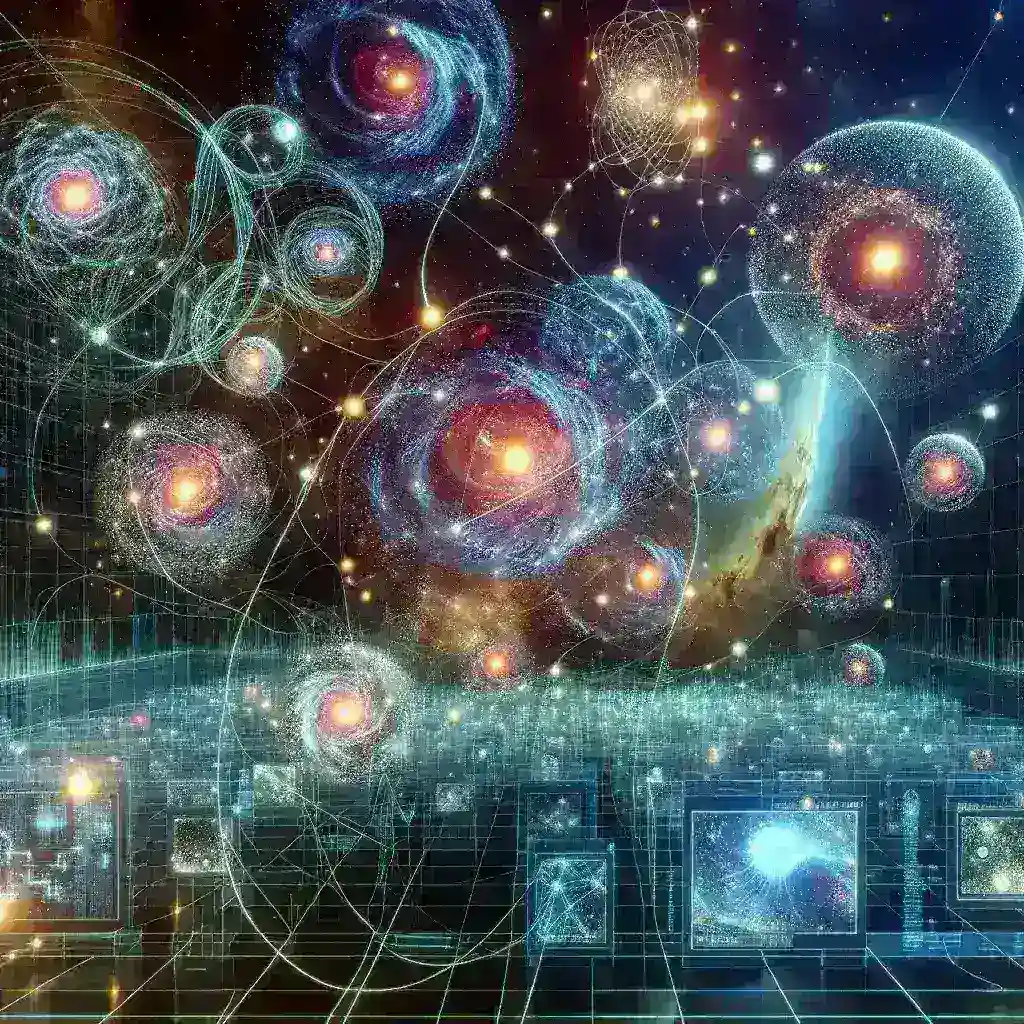Introduction to AI and Astrophysics
The intersection of artificial intelligence (AI) and astrophysics is a frontier of scientific exploration that promises to revolutionize our understanding of the cosmos. By leveraging AI technologies, researchers can create sophisticated simulations that delve into complex astrophysical phenomena, including the intriguing hypothesis of multiple universes.
The Concept of Multiple Universes
Multiple universes, or the multiverse theory, posits that our universe is just one of many that exist simultaneously. Each universe may have different physical laws, constants, and even different dimensions of time and space. This concept challenges the traditional view of a singular universe and opens up new avenues for research.
Historical Context of the Multiverse Theory
The idea of multiple universes has roots in ancient philosophy, but it gained traction in the 20th century with advancements in quantum mechanics and cosmology. Notable physicists, such as Hugh Everett III, introduced the many-worlds interpretation of quantum mechanics, suggesting that all possible outcomes of quantum events occur in separate, branching universes.
The Role of AI in Astrophysics
AI has the potential to enhance astrophysical simulations by processing vast amounts of data, identifying patterns, and making predictions. Traditional simulations can be computationally expensive and time-consuming, but AI algorithms can expedite these processes, allowing researchers to explore a broader range of scenarios in shorter time frames.
Machine Learning Techniques in Simulations
- Neural Networks: These systems can learn from data and improve over time. In astrophysics, neural networks can model complex systems and predict the behavior of celestial phenomena.
- Reinforcement Learning: This approach allows AI to learn optimal strategies for navigating complex environments, which can be applied to simulate the dynamics of multiple universes.
- Generative Adversarial Networks (GANs): GANs can create realistic simulations of celestial events, helping scientists visualize and analyze scenarios that may not be easily observable.
The Benefits of AI-Enhanced Simulations
AI-enhanced simulations offer several advantages for exploring multiple universes:
- Speed: AI can significantly reduce the time required to run simulations, enabling researchers to test more hypotheses.
- Cost-Effectiveness: By optimizing computational resources, AI can lower the costs associated with large-scale astrophysical simulations.
- Improved Accuracy: AI’s ability to analyze data can lead to more accurate models that better reflect the complexities of the universe.
Case Study: The Use of AI in Cosmology
One notable example of AI in cosmology is the work done by researchers at the University of California, Berkeley, who used machine learning algorithms to analyze images from the Hubble Space Telescope. By training AI models on known data, they were able to identify previously unseen astronomical phenomena, contributing to our understanding of the structure and evolution of the universe.
Challenges and Limitations
Despite the potential benefits, there are challenges associated with AI-enhanced astrophysics simulations:
- Data Quality: The accuracy of AI models is heavily dependent on the quality of the input data. Incomplete or biased data can lead to misleading results.
- Interpretability: AI models can be complex and difficult to interpret, making it challenging for researchers to understand the underlying processes driving the simulations.
- Computational Resources: While AI can optimize simulations, the initial setup and training of AI models can be resource-intensive.
Ethical Considerations
As AI continues to shape research in astrophysics and other fields, ethical considerations must be addressed. Questions surrounding data privacy, the potential for bias, and the implications of AI-driven discoveries must be carefully considered.
Future Predictions in AI and Astrophysics
Looking ahead, the integration of AI in astrophysics is expected to grow, leading to groundbreaking discoveries about the universe and the nature of reality. As AI technology advances, researchers will be able to simulate increasingly complex scenarios, including the dynamics of multiple universes, in ways that were previously unimaginable.
Potential Developments
- Advanced Simulation Tools: Future AI models will likely incorporate more sophisticated algorithms and techniques for generating realistic simulations.
- Collaborative Research: AI can facilitate collaboration among researchers across disciplines, enabling a more holistic approach to understanding the cosmos.
- Public Engagement: As AI-enhanced simulations become more accessible, they may engage the public in discussions about the nature of reality and our place in the universe.
Conclusion
AI-enhanced astrophysics simulations represent a groundbreaking frontier in our quest to understand the universe and the possibility of multiple realities. As technology continues to evolve, the potential for discovery expands, promising new insights into the nature of existence itself. By harnessing the power of AI, scientists are not only exploring the vastness of space but also challenging our fundamental perceptions of reality.
In Summary
The fusion of AI and astrophysics offers exciting prospects for exploring the multiverse theory and beyond. As we stand on the brink of a new era in scientific exploration, the implications of these advancements could redefine our understanding of the cosmos.

